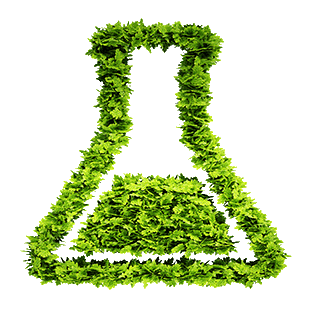Environmental
Responsibility Report
Responsibility Report
2021/2022 Progress Report.
Innovation is the beating heart of everything we do at R10 Labs and that innovation extends to our commitment to environmentally sustainable business practices to protect the natural environment for future generations to enjoy.
We strongly believe our planet deserves our best innovation so we seek to minimise the impact of our business operations on the environment, and work with partners globally to develop and use innovative approaches to important environmental challenges – whether it’s ensuring PVC or Pthalates never make their way into the packaging we use or the ingredients we specify right through to using concentrated extracts to reduce CO2 emissions when shipping.
We still have a long way to go and a lot to learn. We are making progress and will continue to make progress.


Energy Efficiency
Reducing the energy we use in our facilities is an important first step to our goal of increasing sustainability. That’s why we chose our facilities for maximum energy efficiency and audit our facilities to identify (and rectify) missed opportunities for energy optimisations.
The cleanest energy is the energy you never use.
Renewable energy. The data centres we use are built with the environment in mind, often including innovate energy efficiency measures, to consume as little energy as possible, such as high efficiency power supplies and removing unnecessary components from the servers to reduce the load. The energy that is used to power the data centres run on 100% renewable energy.
Website Optimisations. Reducing energy use does not only take place at our data centres and offices. By using the latest web standards, efficient caching & scripts, browsing this website reduces energy usage by reducing transmission size, requiring less data to be transmitted across the network and requiring less CPU time to load the content you want to view. Your energy usage is our energy usage.
Transportation. Transporting thousands of products uses a lot of energy. Our logistics chain is designed to minimise our carbon footprint in this area. This includes the simple process of reducing unnecessary journeys right through to thinking of opportunities to make air, ocean and road shipping more efficient, in turn, using less fuel.
We are continually reviewing our box sizing, packaging material selections through to using many concentrated extracts to make our products lighter and the packaging smaller, to cut down on emissions no matter how it is delivered to you without reducing product performance.
Ocean Health
Microplastics. Between 80,000 and 219,000 tonnes of microplastics enter the European marine environment a year and 0% of it is due to any of our products. About 86 tonnes of microplastics are released into the environment every year in the UK from facial exfoliants alone, A single shower could result in 100,000 plastic particles entering the ocean.
Due to the extremely small size of these microplastics, commonly found in shower gels, face wash and toothpaste, it is not possible to filter out these extremely small particles of plastics, accumulating in the world’s oceans, lakes and estuaries, entering the food chain and harming marine life, the chemicals in plastics and also chemicals which attach themselves to plastic in the natural environment could cause poisoning, infertility and genetic disruption in marine life, and potentially in humans if ingested in high quantities.
We have never and will never use microplastics in any of our products. Simultaneously, we strive to pressure the government into introducing a blanket ban on microplastics.
Biodegrability. Your shower should make you cleaner, not more toxic. What goes down the plug hole will eventually find it’s way into your local streams, rivers, estuaries and the world’s oceans. When designing the formulations for our wash off products (Active-Performance Face Wash, Deep Cleansing Body Wash & Hybrid IQ Shaving Gel-Oil) we took it upon ourselves to formulate products which have a minimal impact on aquatic systems. Not only do we omit toxic chemicals such as Triclosan, artificial dyes & scents, we ensured absolutely every ingredient used within our wash off products is 100% biodegradeable which start to break down as soon as they exit the plughole meaning they have minimum impact on the environment, helping protect aquatic wildlife.

Recyclability
The best way to use a resource is to reuse it. We generate about 177 million tonnes of waste every year in England alone. This is a poor use of resources and also causes environmental damage – for example, waste sent to landfill produces methane, a powerful greenhouse gas.
Making packaging more sustainable is more complicated than it may appear, whilst we think of plastic being non-porous, this isn’t the case for all plastics. Different plastics have different properties which leads to the need for creating multi-layer plastic tubes for skincare products, which decreases it’s recyclability due to the mixture of plastics used within it’s construction.
Designing our packaging was almost as difficult as designing the formulations that reside within it. Working with a top-tier plastics supplier, we created a single layer plastic tube from High Density Polyethylene (HDPE), whilst retaining the properties of a multi-layer plastic tube as tested by ISO standards.
Whilst the special blend of HDPE is perfect for the squeezable tubes, it isn’t suitable for the cap. For this, we opted for Polypropylene (PP). The issue of attaching a cap to the tube may seem simple but in plastics manufacturing, it isn’t. The industry accepted method of using a snap ring to attach the cap to the tube is not good enough for us, as it is incredibly difficult to separate and recycle the individual plastics. Working with our top-tier plastics supplier, a special blend of Polypropylene was developed to incorporate a screw thread, allowing the end user to easily separate out the 2 different plastics used.
As always, we advise our customers to separate the cap from the tube, then simply cut open the top of the tube with a pair of scissors and wash out the remnants before recycling.
Further improvements were made when shipping out the products to consumers. The products are only shipped out in recyclable cardboard packaging and the void fill of choice is recycled paper. We could never fathom using styrofoam peanuts or bubblewrap as both are harmful to our planet.
Green Chemistry Principles
When chemistry is involved in the process of attaining the raw natural material, we ensure our processes and those of our suppliers follow the Green Chemistry Principles. When we use resources we make sure to use them responsibly for two really good reasons. For you and for this planet.

The twelve principles of green chemistry are:
1. It is better to prevent waste than to treat or clean up waste after it is formed.
2. Synthetic methods should be designed to maximize the incorporation of all materials used in the process into the final product.
3. Wherever practicable, synthetic methodologies should be designed to use and generate substances that possess little or no toxicity to human health and the environment.
4. Chemical products should be designed to preserve efficacy of function while reducing toxicity.
5. The use of auxiliary substances (e.g. solvents, separation agents, etc.) should be made unnecessary wherever possible and innocuous when used.
6. Energy requirements should be recognised for their environmental and economic impacts and should be minimized. Synthetic methods should be conducted at ambient temperature and pressure.
7. A raw material or feedstock should be renewable rather than depleting wherever technically and economically practicable.
8. Reduce derivatives – Unnecessary derivatization (blocking group, protection/deprotection, temporary modification) should be avoided whenever possible.
9. Catalytic reagents (as selective as possible) are superior to stoichiometric reagents.
10. Chemical products should be designed so that at the end of their function they do not persist in the environment and break down into innocuous degradation products.
11. Analytical methodologies need to be further developed to allow for real-time, in-process monitoring and control prior to the formation of hazardous substances.
12. Substances and the form of a substance used in a chemical process should be chosen to minimise potential for chemical accidents, including releases, explosions, and fires.
Here at R10 Labs, we are committed to taking responsibility for and mitigating our impact on the environment….
….But we know that there’s much more work to do to address climate change and advance sustainability, that is why we will never stop innovating, never stop questioning and never stop improving.